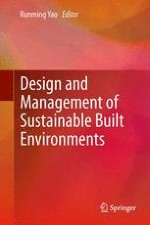2013 | OriginalPaper | Chapter
9. Design of the Indoor Environment
Author : Ken Parsons
Published in: Design and Management of Sustainable Built Environments
Publisher: Springer London
Activate our intelligent search to find suitable subject content or patents.
Select sections of text to find matching patents with Artificial Intelligence. powered by
Select sections of text to find additional relevant content using AI-assisted search. powered by
